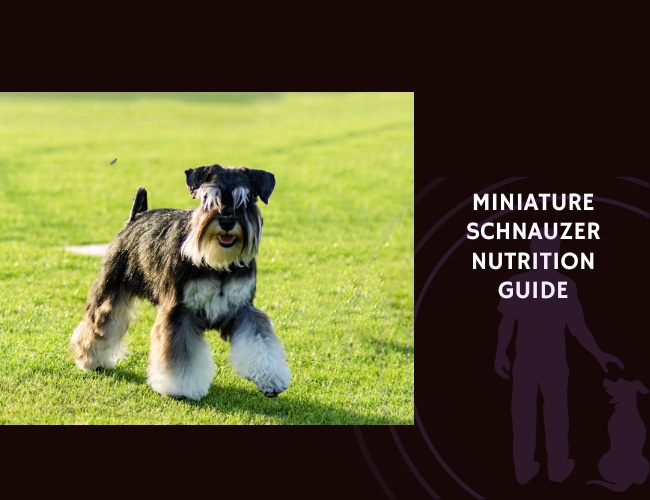Understanding Protein and Its Importance
Basic Functions of Protein in a Dog’s Body and Growth
Protein is an essential macronutrient for all living organisms, including our beloved canine companions. It’s often termed the “building block of life,” because it plays a critical role in various physiological processes. Here are some key functions of protein in a dog’s body:
- Growth and Development: Protein is crucial for the growth and development of tissues and organs. It supports the building and repair of muscles, skin, cells, and other body tissues.
- Immune Function: Proteins are vital for the production of antibodies and enzymes, which are necessary for a robust immune system.
- Energy Source: Although carbohydrates and fats are the primary sources of energy, protein can also be metabolized to provide energy, especially during periods of heavy exercise or when other energy sources are limited.
- Hormone Production: Proteins are involved in producing hormones that regulate various bodily functions, including growth, metabolism, and reproduction.
Dogs require a balanced diet with adequate protein to maintain these essential functions. Ensuring your dog gets the right amount of protein can lead to improved health, vitality, and longevity.
Why Calculating the Right Protein Amount Matters
Knowing the precise amount of protein your dog needs is vital for a few reasons:
- Optimal Health: Too little protein can lead to deficiencies, hindering your dog’s growth, immune function, and overall health. Conversely, excessive protein intake can strain the kidneys and lead to other health issues.
- Weight Management: Calculating the right protein quantity can help in managing your dog’s weight. Higher protein diets often support muscle maintenance and reduce fat, keeping your dog lean and healthy.
- Tailored Nutrition: Dogs have varied protein needs based on their age, size, breed, and activity level. By calculating the right protein amount, you’re providing personalized nutrition that meets their specific needs.
- Performance and Recovery: For active dogs, adequate protein ensures proper muscle recovery and stamina. It helps in maintaining peak performance and faster recovery from physical activities.
Key Factors That Influence Protein Requirements
Understanding that different dogs have different protein needs is essential. Here are some of the key factors that influence how much protein your dog requires:
- Age: Puppies need more protein than adult dogs because they are growing rapidly and need it to build tissues and organs. Senior dogs also have unique protein needs to maintain muscle mass and support body repair.
- Size and Breed: Larger breeds often require more protein merely due to their size. However, the protein needs might vary among different breeds, depending on their specific genetic predispositions.
- Activity Level: Active dogs, such as those that regularly participate in sports or have high physical demands, will have higher protein requirements than sedentary dogs.
- Health Status: Dogs recovering from illness, injury, or surgery might need additional protein to repair and build tissues. Likewise, certain health conditions might require special dietary adjustments.
- Life Stage: As dogs transition through different stages of life—puppyhood, adulthood, senior years—their protein needs change. It’s important to adjust their diet accordingly to ensure they receive the right nutrients for their stage of life.
By understanding the importance of protein and the various factors influencing protein requirements, dog owners can make informed decisions about their pets’ diets. Next, we will delve deeper into how age specifically influences a dog’s protein needs.
Age-Based Protein Requirements
Understanding your dog’s protein needs is crucial. As your dog ages, their protein requirements shift, and it’s important to adjust their diet accordingly. In this chapter, we will discuss protein requirements for puppies versus adult dogs, how senior dogs’ needs differ, and how to adjust protein intake through different life stages.
Protein Needs for Puppies vs Adult Dogs
For puppies, protein is a key nutrient essential for their rapid growth and development. Puppies require a higher percentage of protein in their diet to support:
- Growth of muscles and tissues
- Development of enzymes and hormones
- Strong immune system function
Typically, puppies need about 22-32% protein in their diet. This high protein requirement helps with their fast growth rate and energy levels.
Adult dogs, on the other hand, require slightly less protein. Their needs primarily focus on maintaining muscle mass, repairing body tissues, and supporting daily metabolic functions. The average protein requirement for adult dogs is between 18-25% of their diet. As adult dogs aren’t growing as rapidly as puppies, their protein intake is adjusted to prevent unnecessary weight gain and muscle strain.
How Senior Dogs’ Protein Requirements Differ
Senior dogs, usually classified as those aged seven years and older, have different protein needs due to their aging bodies. As dogs age, they naturally lose muscle mass and may develop chronic conditions that affect their overall health. Protein becomes vital for:
- Maintaining muscle mass
- Supporting immune function
- Promoting tissue repair and reducing muscle wasting
- Ensuring metabolic health
Older dogs can benefit from a diet that includes 20-25% protein. While this is similar to adult dogs, the quality of protein becomes more significant. Easily digestible protein sources, like those found in animal meats, help ensure that senior dogs can effectively absorb and utilize the nutrients. Plant-based proteins may be insufficient as they sometimes lack essential amino acids in amounts dogs need.

Adjusting Protein Intake Through Different Life Stages
Adjusting protein intake should be a continuous process as your dog moves through different life stages. Here are some tips to ensure your dog gets the right amount of protein throughout their lives:
- Puppyhood: Feed high-quality, protein-rich foods specifically formulated for puppies to support their intensive growth phase.
- Adulthood: Transition to an adult dog food formula, ideal for maintaining a healthy weight and supporting daily activity. Monitor your dog’s weight and activity level, adjusting protein levels to prevent obesity.
- Senior Years: Consider senior dog food formulas that focus on higher-quality protein and lower calories. It’s also beneficial to consult with a vet to tailor your senior dog’s diet specifically based on individual health needs, such as mobility issues or metabolic disorders.
By understanding and adjusting your dog’s protein needs through these life stages, you can promote a healthy, active, and long life. Balancing protein intake with their changing requirements helps in ensuring robust health, vitality, and overall well-being.
Ensuring that your dog receives the appropriate protein tailored to their age is one part of the wider picture. Next, we will explore how a dog’s size and breed influence its protein needs.
Size and Breed Considerations
Growth is a unique journey for every dog, and understanding size and breed-specific protein needs is key to supporting their health. This chapter dives into how these factors influence your dog’s protein requirements and provides specific guidelines for small, medium, and large breeds.
How Breed Size Affects Protein Needs
Protein is the building block of your dog’s body. It plays a critical role in muscle development, tissue repair, and overall vitality. However, the amount of protein needed varies significantly with the dog’s size.
- Small Breeds
Small breeds, like Chihuahuas and Miniature Poodles, often have higher metabolic rates compared to their larger counterparts. This means they burn through energy more quickly and may require a diet with a slightly higher protein percentage. Small breeds typically need around 25-30% protein in their diet to maintain their energy levels and muscle mass. - Medium Breeds
Medium-sized breeds, such as Beagles and Border Collies, fall somewhere in between small and large breeds in terms of protein needs. These dogs generally need about 22-28% protein to support their active lifestyle and maintain optimal health. The variation accounts for differences in activity levels and metabolism within this group. - Large Breeds
Large breeds, including German Shepherds and Labradors, may not require as high a percentage of protein as smaller dogs, but they do need large quantities of high-quality protein. Typically, a protein range of 18-24% is suitable for these breeds. It’s essential to meet but not exceed this range to avoid potential health issues like rapid growth that can lead to joint problems.
Specific Requirements for Small, Medium, and Large Breeds
Each breed category comes with its set of unique needs that should be met to ensure a balanced diet and healthy lifestyle. Here’s a detailed overview of specific considerations:
- Small Breeds
- High Metabolism: These dogs need frequent, smaller meals to keep up with their energy consumption.
- Nutrient-Dense Diet: Higher protein content and fat levels in their diet help support their energy needs.
- Quality Over Quantity: Focus on lean meat sources such as chicken or fish.
- Medium Breeds
- Balanced Diet: These dogs thrive on a balanced diet that supports both their muscular and skeletal frameworks.
- Varied Protein Sources: A combination of chicken, beef, and fish helps meet their protein needs while providing a diverse nutrient profile.
- Portion Control: Due to a moderate metabolism, proper portion sizes are crucial to avoid overfeeding.
- Large Breeds
- Joint Health: These dogs are prone to joint issues, making protein from sources containing glucosamine and chondroitin beneficial.
- Controlled Protein Intake: Avoid excessive protein which may contribute to rapid growth and skeletal issues.
- High-Quality Protein: Lean meat and fish provide necessary nutrients while reducing the risk of obesity.
Breed-Specific Considerations for Protein Intake
Protein requirements can also vary within sizes due to breed-specific health concerns and activity levels:
- Bulldogs: Prone to obesity; they benefit from a high-protein, low-carb diet to maintain a lean body mass.
- Poodles: Known for sensitive digestion; high-quality, easily digestible proteins are ideal.
- Labradors: Active and energetic; they need a protein-rich diet that supports their lifestyle but without leading to excessive weight gain.
Understanding how breed and size affect your dog’s protein needs can significantly improve their overall health and longevity. Monitoring these aspects will help you tailor their diet to provide the balanced nutrition they deserve.
Following a thoughtful and informed approach ensures that your dog’s dietary needs are met precisely. This let’s transition towards understanding our dog’s activity levels and how it further refines their protein intake.
Activity Level Assessment
Categories of Activity Levels
Dogs come in all shapes and sizes, and their energy levels can vary drastically. To ensure they receive the correct amount of protein, understanding their activity level is essential. Here, we categorize dogs into three primary activity levels:
- Low Activity: These dogs are mostly sedentary, enjoying short, slow walks. They might be older, have health issues, or simply prefer lounging around.
- Moderate Activity: These dogs are your average family pet, enjoying regular playtime, daily walks, and light exercise.
- High Activity: These energetic dogs are always on the move. They might participate in agility sports, long runs, or work as service animals.
How to Determine Your Dog’s Activity Level
Determining your dog’s activity level may appear challenging, but it’s quite manageable with a few observations and consistency:
- Observe Daily Behavior: Take note of how active your dog is throughout the day. Do they enjoy long walks? Are they constantly playing? Or would they rather nap by your feet?
- Assess Age and Health: Younger, healthier dogs tend to be more active. Senior dogs or those with health issues (like arthritis) may be less active.
- Evaluate Routine: If your dog participates in daily exercise routines or works daily (like herding or service duties), they are likely classified as highly active.
Protein Requirements for Different Activity Classifications
Understanding your dog’s activity level is key to calculating their protein needs accurately. Let’s break it down:
Low Activity Dogs
For low activity dogs, you must ensure their protein intake supports their basic bodily functions without causing weight gain. These dogs generally need around 18-20% of their daily calorie intake to come from protein. High-quality proteins, such as chicken, turkey, and fish, are recommended.
Moderate Activity Dogs
Moderate activity dogs require a balanced protein intake to maintain muscle mass and support their everyday energy expenditure. Typically, 20-25% of their daily calorie intake should be protein. Varied protein sources, like beef, lamb, and eggs, can keep their diet interesting and nutrient-rich. 🐾
High Activity Dogs

High activity dogs have higher protein demands to support muscle repair and recovery after intense exercise. These energetic canines need about 25-30% of their daily calorie intake to be protein. High-energy breeds or working dogs benefit greatly from lean meats and high-protein diets.
Remember, these are general guidelines. Each dog is unique, so monitoring their health and adjusting their diet as needed is crucial. 🐶
By now, you should have a good grasp of evaluating your dog’s activity level and understanding how it influences their protein needs. Use this knowledge to make informed decisions about your dog’s diet, ensuring they receive the right amount of protein to thrive. This foundation is essential as we move forward in implementing these findings practically.
Now that we’ve sorted out the activity levels, let’s move ahead to explore how to make use of technology to simplify our calculations. Stay tuned!
Using the Protein Calculator
Knowing your dog’s protein needs is crucial to its health and well-being. In this chapter, we’ll guide you on how to use a protein calculator accurately, explaining each step, the importance of the input parameters, and how to interpret the results you get.
Step-by-Step Guide to Using the Calculator
A reliable protein calculator helps ensure your dog gets the precise amount of protein it needs. Follow these steps to use the calculator efficiently:
- Gather Required Information: Have details like your dog’s age, weight, activity level, breed, and health conditions ready.
- Access the Calculator: Navigate to the protein calculator on your preferred healthy pet website.
- Input Basic Data: Enter your dog’s age (in years and months), weight (in kilograms), and breed into the respective fields.
- Select Activity Level: Choose the activity level that best describes your dog’s daily lifestyle—low, moderate, or high.
- Health Considerations: If there are any health conditions like obesity, kidney issues, or allergies, input those details as well.
Input Parameters and Their Significance
Each input parameter in the protein calculator has its significance, impacting the final results.
- Age: Knowing if your dog is a puppy, adult, or senior is vital as it influences the protein percentage needed for growth, maintenance, or muscle preservation.
- Weight: The protein requirement is determined on a per kilogram basis. Larger dogs need a higher absolute amount of protein.
- Breed: Some breeds have unique metabolic rates and health considerations that impact protein requirements.
- Activity Level: This is perhaps the most critical factor. A highly active dog, such as an agility or working dog, will need significantly more protein than a couch companion.
- Health Status: Conditions like obesity or renal issues will skew protein needs, with the calculator adjusting recommendations accordingly.
Interpreting the Calculator Results
Once you generate the results, interpreting them correctly is crucial:
- Protein in Grams: The result will usually show the amount of protein in grams your dog needs daily.
- Protein Percentage: It might also indicate the percentage of protein from overall calorie intake.
- Contextual Advice: Many calculators provide additional tips, such as recommending high-quality protein sources or advising veterinary consultation for specific health concerns.
By carefully entering accurate data and understanding the results, you can ensure your canine friend receives the right protein amount, enhancing its health and longevity.
As you move forward with using this information, you will also need to adapt these protein recommendations into practical daily feeding amounts and select the right protein sources to maintain your dog’s optimal health.
Implementing the Results
After using the protein calculator to identify the right protein intake for your dog, it’s essential to implement these findings effectively. This chapter will guide you through converting the calculator results into daily feeding amounts, choosing the best protein sources, and monitoring and adjusting your dog’s protein intake to ensure optimal health.
Converting Calculator Results into Daily Feeding Amounts
Once you’ve obtained the recommended protein intake from the calculator, it’s time to break it down into practical feeding amounts. Here’s how you can do this:
- Determine Total Daily Protein Requirement: Based on the calculator’s result, you’ll have a specific protein requirement in grams or as a percentage of daily caloric intake.
- Consider Your Dog’s Diet: Assess the current diet you’re feeding your dog. This includes both kibble and wet food. Check the packaging for protein content, typically listed as a percentage.
- Calculate Protein from Different Sources:
- If feeding kibble, find out how many grams of kibble you’re giving your dog each day.
- Multiply the total grams of kibble by the protein percentage to calculate the total protein amount from kibble.
- Adjust Portion Sizes: Adjust feeding portions to match the required protein intake. For example, if your dog’s daily requirement is 60g of protein and their kibble contains 25%, they’ll need roughly 240g of that kibble daily (since 240g * 0.25 = 60g).
Choosing Appropriate Protein Sources
Selecting high-quality protein sources is crucial for meeting your dog’s nutritional needs. Here are some guidelines:
- Animal-Based Proteins: These are highly recommended as they are complete proteins, containing all essential amino acids. Good examples include:
- Chicken
- Beef
- Fish
- Lamb
- Eggs
- Plant-Based Proteins: These can be supplemental but should not be the primary source. Examples include:
- Lentils
- Quinoa
- Chickpeas
- Balanced Meals: Ensure that proteins are balanced with other nutrients like fats, fiber, vitamins, and minerals.
- Allergies and Sensitivities: Be aware of any allergies your dog might have. For dogs with sensitivities, hydrolyzed protein dog food can be an excellent choice as it’s easier to digest.
Monitoring and Adjusting Protein Intake
Implementing the specific protein needs involves frequent monitoring and adjustments based on your dog’s response:
- Regular Weight Checks: Monitor your dog’s weight regularly to ensure that they remain within a healthy range. Unintended weight gain or loss can indicate the need for dietary adjustments.
- Observe Energy Levels: Take note of your dog’s activity levels. A noticeable increase in lethargy or hyperactivity can also indicate inappropriate protein levels.
- Health Checks: Regular veterinary visits are essential. They can conduct assessments, such as blood tests, to ensure that protein intake is supporting your dog’s overall health.
- Adjust as Needed: Based on the observations and veterinary advice, tweak the protein portions. This might mean increasing or decreasing the protein percentage of their diet.
By following these strategies, you can confidently implement the protein calculator’s results to enhance your dog’s health and well-being. Make sure to keep a close eye on your furry friend and consult with your vet to ensure they thrive at all times.
Looking forward, it’s time to delve into the specifics of how your dog’s unique attributes influence their dietary needs.










